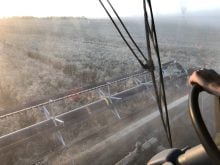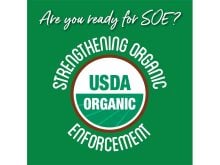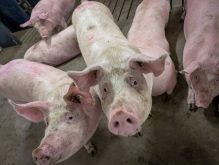LAKESIDE, Neb. — It’s a bit unusual for a ranch manager to say he isn’t really in the beef business.
Rex Ranch in north-central Nebraska is a hard working operation with 16 ranch hands who manage 12,500 cows and 10,000 yearlings.
Owned by the Mormon church since 1990, the 300,000 acre operation is a conglomeration of several ranches that practice holistic management and raise plenty of beef.
“We really are not in the cattle business. The church is in the land business,” ranch manager Chip Ramsay told a tour sponsored by the Saskatchewan agriculture ministry.
Read Also

U.S. bill could keep out Canadian truckers
The Protecting America’s Roads Act, which was tabled in the U.S. House of Representatives at the beginning of October, would “rid the country of illegal immigrant commercial truck drivers and ineligible foreign nationals.”
“Land is a pretty good hedge against inflation.”
However, it is also a food producing enterprise that the church considers to be wholesome and ethical.
Employees are paid competitive wages with full benefits. Income from the ranch goes to central management for initiatives such as building new churches or operating disaster relief programs.
“They look at this as a rainy day fund. We have a bunch of protein available for people in a time of need,” he said. “Otherwise, it operates just like a business and the financials matter to us.”
The ranch is among several large beef operations that the church owns in the United States and southern Alberta. Most recently, it bought a 45,000 head feedlot at Garden City, Kansas, to accept cattle from its extensive properties.
“We figured the best way to make genetic progress is to buy your own feed yard,” he said.
This way, the ranch can track animals from pasture to processor. It doesn’t plan to buy a packing facility.
The ranch is divided into smaller manageable units, which managers run autonomously. There are family homes on each site as well as pens and other facilities such as scales and water.
“You don’t have to be a Mormon to work here, you just gotta be good,” said Ramsay.
This part of Nebraska receives 430 millimetres of rain per year and most falls between April and September.
Windmills and solar pumps draw water from aquifers. Lakes dot the property, but they are alkali and the quality is poor.
Grazing management is critical, and the ranch is working on more winter forage to save money.
Calving was switched to May, and the ranch was able to cut back hay rations to 450 pounds per cow per season instead of feeding each one about a tonne over winter.
Grazing paddocks are divided with electric fences, in which cattle stay no more than three to five days.
“We try not to come back to a pasture for 90 to 100 days. It is not how long we are in a pasture but how long we are out of pasture that we focus on for recovery time,” he said.
“Our goal is to quit baling it up and let the cattle eat it, and that has dropped our costs quite a bit.”
Thirteen acres of grazing land are required to support 1,000 pounds of animal on the ranch’s meadows and sandy, rocky hills.
It has developed a closed composite cow herd of 50 percent Angus, red or black and 25 percent each of South Devon and Simmental.
“There probably isn’t a cow on the place that is a quarter, quarter, half, but the population is that,” he said.
A seedstock herd is expected to raise replacements. About half are artificially inseminated to Angus sires and the other half mated to Simmental and South Devon bulls. The ranch figures on three bulls per 100 cows when naturally mating.
“We don’t feel we are raising enough calving ease bulls so we want to use something that is proven to help the guys out at calving season,” he said.
“We like to keep things fresh and bring in the proven genetics that are out there.”
The heifers are exposed to bulls for 28 days to shorten the calving period. The ranch prefers a shorter season because it may calve 900 heifers in the spring.
Heifers are due to calve in mid- April and the cows start around May 1 for about six weeks.
Ranch managers select females for the seedstock herd that were trouble free for two years. A notch is cut into a plastic dangle ear tag if the heifer or cow has a problem. Two notches send the cow to the commercial herd to produce feedlot calves.
The average cow is five years old and is transferred to the “granny herd” when it is nine years old.
The calves receive a regular vaccination program and are dehorned and castrated at spring branding time. The brand is a crown on the left hip. They wear plastic dangle tags and have a numbering system that identifies the dam and when they were born.
Calves are fence line weaned.
“Those calves go to grazing and it is momma that gets to bellering a little bit,” Ramsay said.
Every calf has been weaned for 45 days before it leaves the ranch.
“It’s much less stress. It really is a better way.”
Young bulls are selected in December and go on a 100 day gain test. They are also body condition scored and ultrasound tested for marbling and ribeye size.
Heavy weight calves are sent to the feedlot while the lighter, younger ones are kept back as yearlings for the next summer grazing program.
“We are trying to put together a supply of cattle that are fairly even for somebody to brand with something that really adds value,” Ramsay said.

















